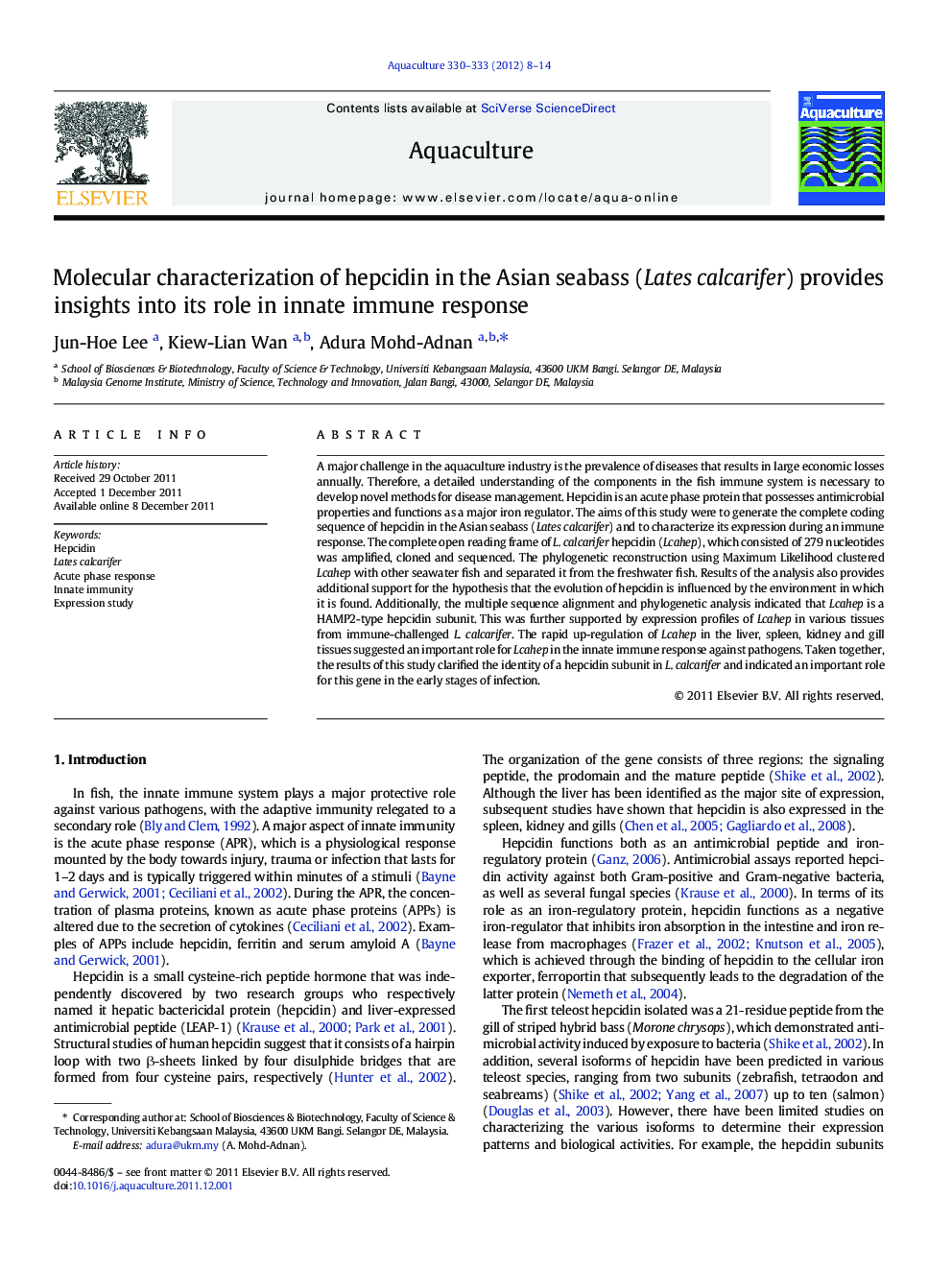| Article ID | Journal | Published Year | Pages | File Type |
|---|---|---|---|---|
| 2422664 | Aquaculture | 2012 | 7 Pages |
A major challenge in the aquaculture industry is the prevalence of diseases that results in large economic losses annually. Therefore, a detailed understanding of the components in the fish immune system is necessary to develop novel methods for disease management. Hepcidin is an acute phase protein that possesses antimicrobial properties and functions as a major iron regulator. The aims of this study were to generate the complete coding sequence of hepcidin in the Asian seabass (Lates calcarifer) and to characterize its expression during an immune response. The complete open reading frame of L. calcarifer hepcidin (Lcahep), which consisted of 279 nucleotides was amplified, cloned and sequenced. The phylogenetic reconstruction using Maximum Likelihood clustered Lcahep with other seawater fish and separated it from the freshwater fish. Results of the analysis also provides additional support for the hypothesis that the evolution of hepcidin is influenced by the environment in which it is found. Additionally, the multiple sequence alignment and phylogenetic analysis indicated that Lcahep is a HAMP2-type hepcidin subunit. This was further supported by expression profiles of Lcahep in various tissues from immune-challenged L. calcarifer. The rapid up-regulation of Lcahep in the liver, spleen, kidney and gill tissues suggested an important role for Lcahep in the innate immune response against pathogens. Taken together, the results of this study clarified the identity of a hepcidin subunit in L. calcarifer and indicated an important role for this gene in the early stages of infection.
► Hepcidin is an antimicrobial and iron-regulator peptide. ► We generated the complete coding sequence of a hepcidin subunit (Lcahep) in Lates calcarifer. ► Phylogenetic analysis suggested that Lcahep is a type-2 subunit. ► Expression studies provided insight into the host innate immune response. ► Lcahep plays an important role in the early stages of infection.
